Carlsen, Vidit and Duda in the lead
For the first time in Wijk aan Zee, Magnus Carlsen got to beat local hero Anish Giri, as he defeated him with white in the second round of this year’s Masters tournament. This was the Norwegian’s first full point this edition — he drew Andrey Esipenko on Saturday. The world champion is now sharing the lead with Vidit Gujrathi and Jan-Krzysztof Duda, who both won in the first round and grabbed half points on Sunday.
Carlsen played enterprisingly from the get go and sacrificed an exchange as early as on move 16. It was a correct sacrifice, which gave him the upper hand.
 Let our authors show you how Carlsen tailored his openings to be able to outplay his opponents strategically in the middlegame or to obtain an enduring advantage into the endgame.
Let our authors show you how Carlsen tailored his openings to be able to outplay his opponents strategically in the middlegame or to obtain an enduring advantage into the endgame.
The sequence 16.Rxc6 Qxc6 17.Ne5 leaves the black queen with only a few squares to escape while opening up the long diagonal for White’s light-squared bishop. The engines assess the position as balanced, but after 17...Qb5 18.Qc2 Giri already faltered, as White has many dynamic threats with his active pieces.
Giri thought for almost 15 minutes before playing 18...Nd5, which gives way to 19.Rb1 (attacking the passive queen) Qa5 20.Bxd5 exd5 21.Rxb7 and White is clearly for choice.
In the diagrammed position, Black had a better alternative — he could have played 18...Nb6, which would have been followed by the forcing 19.Bxb7 Nc4 20.Bxa8 Nxa3, and here White can play either 21.Qc6 or 21.Qxc7
This looks bad for Black, but after 21...Rxa8 he is nonetheless a piece up — 21.Qc6 is more nuanced, but it lead to roughly equal positions as well. After analysing these lines, we can understand why Giri rejected 18...Nb6.
Going back to the game, though, the Dutchman’s position quickly crumbled, with the world champion showing precise play to punish his opponent’s mistakes.
Giri went for 21...c5 here, and after 22.Qf5 Rf8 23.Nxf7 he played the showy 23...Qd8
Black is busted, but he goes down in style. Carlsen needed a bit over 10 minutes to find the correct 24.dxc5, and he did not hesitate to enter a superior endgame 24...Qf6 25.Qxf6 gxf6. The world champion had two pawns for the exchange, in addition to a more solid structure and active, coordinated pieces.
This is how the position looked after 26.Nh6+ Kh8 27.c6 Rc8 28.c7
Carlsen had no trouble converting his advantage into a 36-move victory. The Norwegian will face Duda with black in round 3, while Giri will try to bounce back in his game with white against Shakhriyar Mamedyarov.
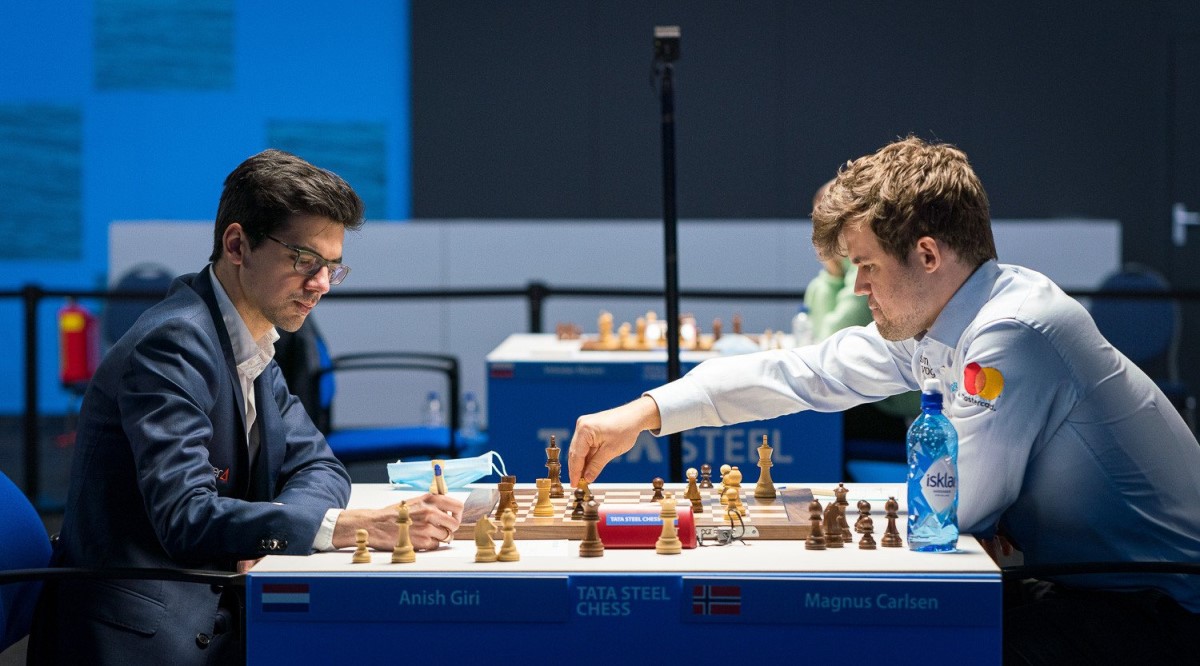
The world champion took down the ever-dangerous (particularly in Wijk aan Zee) Anish Giri | Photo: Lennart Ootes
Rapport wins, Mamedyarov keeps it interesting
After losing against Duda in the first round, Rapport returned to a fifty-percent score by beating defending champion Jorden van Foreest with the white pieces. In an equal knight endgame, both players were low on time and the Dutchman went for a tricky move which simply does not work.
As the winner of the game explained afterwards, Black tried to go for counterplay by attacking the queenside pawns with 35...Nd7. However, White does not need to do anything in the centre and can immediately grab the h7-pawn with 36.Nxh7. Van Foreest had planned to go for 36...e5+ 37.fxe5 Nxe5 38.exf5 Nc6+ 39.Kc4 Ke5, but White keeps things under control with 40.f6 — everything is protected.
Rapport needed seven more moves to claim the win, and later called this “a present” by his opponent. The Hungarian himself had over-pressed from an equal position in round 1, so he considered that it is fair for him to have a fifty-percent score after two days of play.
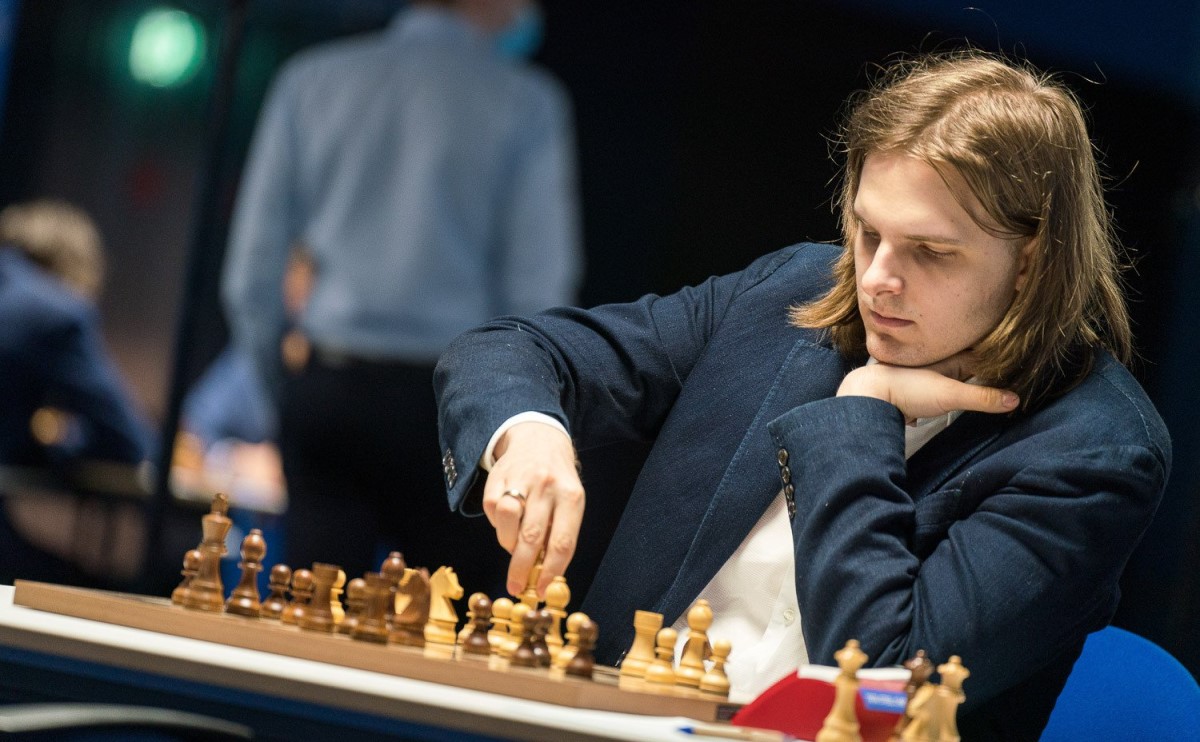
Hungarian star Richard Rapport | Photo: Lennart Ootes
Earlier in the round, Mamedyarov had gone for the most shocking opening variation in his game against Esipenko.
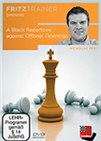 Many club players have their favourite pet opening variations which aren’t necessarily main lines. It’s important to know how to handle these variations as your opponent will likely know his systems well. In this DVD, GM Nicholas Pert provides a detailed Black repertoire against many of these Offbeat Opening choices.
Many club players have their favourite pet opening variations which aren’t necessarily main lines. It’s important to know how to handle these variations as your opponent will likely know his systems well. In this DVD, GM Nicholas Pert provides a detailed Black repertoire against many of these Offbeat Opening choices.
The Azerbaijani simply cannot stop himself, as he finds ways to push his g-pawn as early as possible when playing white, even while facing top grandmasters. After having missed a huge chance to kick off the event with a win over Daniil Dubov, Shakh went for the throat with 3.g4, but saw his opponent steering away from the sharpest line, as after thinking for 8 minutes Esipenko played 3...d5 instead of 3...Nxg4.
In the end, a draw was signed after 26 moves. But we can certainly expect for Mamedyarov to continue stirring trouble for his opponents in the following rounds!
Select an entry from the list to switch between games
Round 2 results
Standings after round 2
All games
Murzin wins again
Curiously, 15-year-old Volodar Murzin is not the youngest player in the Challengers tournament, but his being the sole leader after two rounds is nonetheless remarkable. The young Russian beat his compatriot Polina Shuvalova to become the only player in both sections to kick off the event with a perfect 2/2 score.
Three players stand a half point behind — Thai Dai Van Nguyen (Czech Republic), Surya Ganguly and Arjun Erigaisi (both from India). Arjun beat Max Warmerdam with black after the Dutchman was over-confident in giving up his queen in the early middlegame.
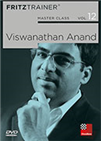 This DVD allows you to learn from the example of one of the best players in the history of chess and from the explanations of the authors how to successfully organise your games strategically, and how to keep your opponent permanently under pressure.
This DVD allows you to learn from the example of one of the best players in the history of chess and from the explanations of the authors how to successfully organise your games strategically, and how to keep your opponent permanently under pressure.
16.Rxa6, played after almost 40 minutes, allows 16...Bxf2+ 17.Kxf2 Rxc2, when White considered that 18.bxa7, getting a far-advanced passed pawn, gave him enough counterplay for the queen. As Arjun demonstrated, though, this was not the case. The Indian continued to play confidently and quickly until getting a 25-move win.
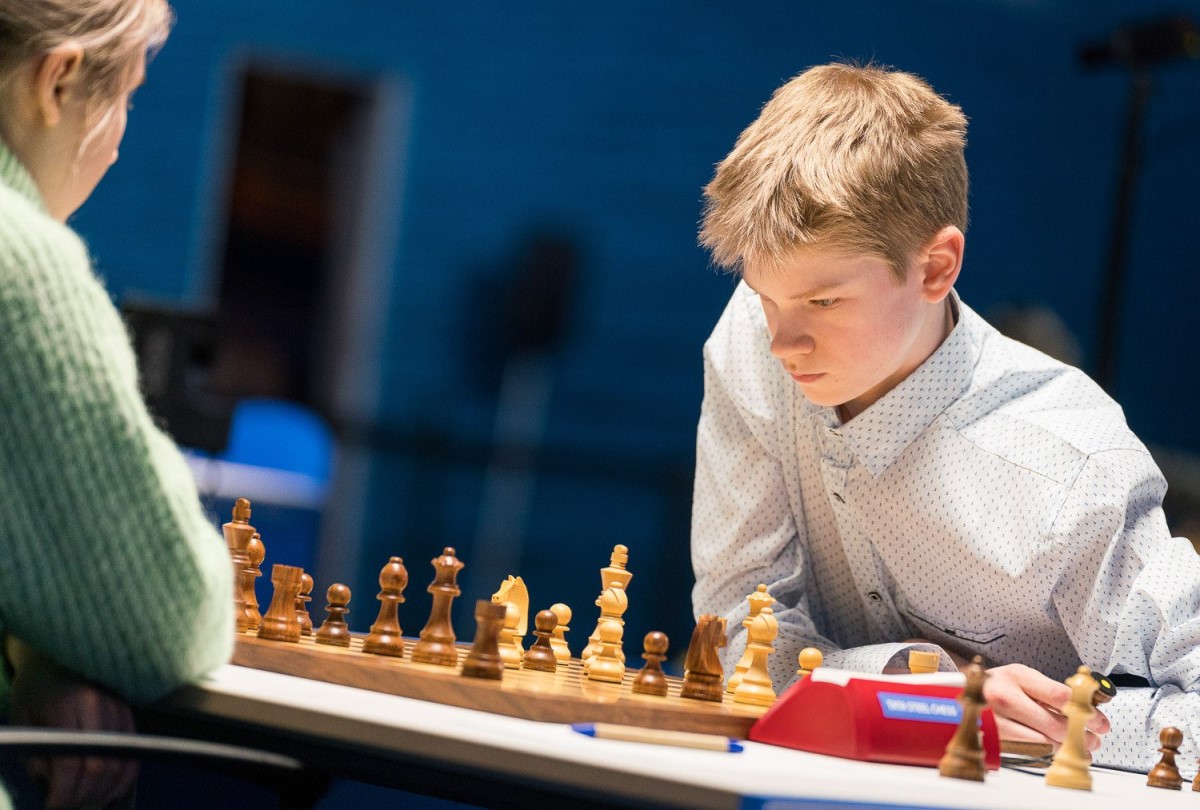
15-year-old Volodar Murzin is leading the field in the Challengers | Photo: Lennart Ootes
Round 2 results
Standings after round 2
All games
Links


























